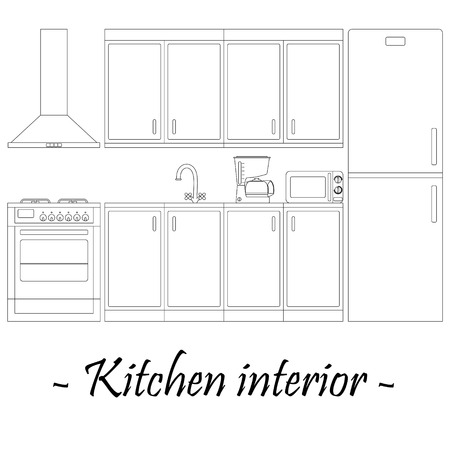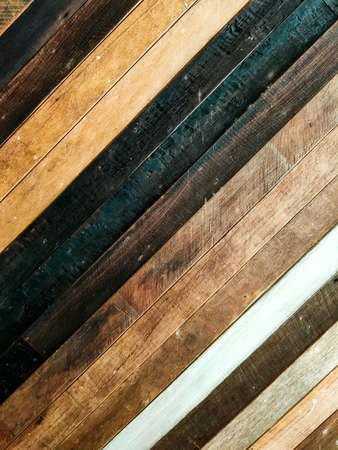Contextual Charm: The British Period Home
Across the British Isles, period homes stand as proud markers of the nations layered history, each property woven into its local context through distinctive architectural language. From Georgian terraces lined with weathered sandstone to Victorian townhouses adorned with ornate ironwork, these dwellings encapsulate both social heritage and regional identity. What makes a British period home truly captivating is its rich palette of historic materials—oak beams hewn centuries ago, hand-forged metal balustrades, and time-worn stone facades—that have gracefully weathered generations. The interplay of these textures tells a story not just of aesthetic preference but of resourcefulness, craftsmanship, and local character. In cities like Bath and Edinburgh, for example, honeyed limestone or rugged granite evokes a strong sense of place, while in rural settings timber-framed cottages reflect centuries-old building traditions shaped by their environment. This deep-rooted materiality forms the soul of period properties, offering modern custodians both a heritage to honour and an inspiring canvas for contemporary interventions.
2. Material Narratives: Wood, Metal, and Stone Through the Ages
To truly appreciate the distinctive atmosphere of period British properties, one must understand the legacy of materials that have shaped them over centuries. From the stately Georgian townhouses to the ornate detailing of Victorian villas and the airy elegance of Edwardian homes, wood, metal, and stone have each played pivotal roles in defining both structure and style.
Georgian Era: Order and Refinement
The Georgian period (1714–1837) is synonymous with symmetry and restrained grandeur. Oak and pine were commonly used for floorboards, panelling, and intricate staircase balustrades. Stone—most notably Bath stone—gave façades their dignified appearance, while wrought iron introduced a touch of refinement to railings and balconies.
Victorian Era: Innovation Meets Ornamentation
The Victorian age (1837–1901) marked a flourish of innovation. The Industrial Revolution made cast iron widely available, allowing for elaborate fireplaces, decorative gates, and robust structural elements. Mahogany and walnut brought warmth to parlours and libraries, while slate and granite became increasingly popular for hearths and exterior cladding.
Edwardian Era: Lightness and Airiness
The Edwardian era (1901–1910) embraced lighter tones and airier spaces. Timber framing was often painted white or pale hues to enhance brightness. Brass fixtures added subtle elegance, contrasting with the heavier ironwork of previous decades. Sandstone and terracotta tiles appeared in garden paths and porches, blending homes with their natural surroundings.
| Era | Wood | Metal | Stone |
|---|---|---|---|
| Georgian | Oak, Pine | Wrought Iron | Bath Stone, Portland Stone |
| Victorian | Mahogany, Walnut | Cast Iron, Brass | Slate, Granite |
| Edwardian | Pale-painted Timber | Brass, Lighter Ironwork | Sandstone, Terracotta Tiles |
This historic interplay between wood, metal, and stone not only provided practical durability but also established the textural foundation upon which todays modern interventions are layered. Understanding these narratives is key when seeking to integrate contemporary design elements without compromising a propertys authentic British character.

3. Contemporary Craft: Melding Old with New
Design-savvy Brits have long excelled at marrying the past and present, especially within the evocative walls of period properties. The current wave of interior innovation is defined by a fearless blending of eras—where original features such as ornate plasterwork, timber beams, or flagstone floors become the backdrop for sharp, modern interventions. Homeowners are embracing an eclectic language: think slender steel-framed doors juxtaposed against Jacobean paneling, or sleek brushed brass lighting floating above timeworn oak dining tables. This approach is more than aesthetic rebellion; it’s about storytelling through textures and materials that respect heritage while echoing contemporary sensibilities.
In homes from Georgian terraces in Bath to Victorian semis in London’s leafy suburbs, traditional craftsmanship meets new-age design. Bespoke joinery in pale ash or walnut sits comfortably beside exposed brick or stonework, creating a tactile dialogue between old soul and new spirit. Here, British restraint comes into play—the palette is often muted, allowing the interplay of wood grain, cold metal accents, and rugged masonry to take centre stage without visual cacophony. These spaces feel both curated and lived-in; authenticity remains paramount as every intervention seeks to enhance rather than overshadow the property’s historic character.
For many UK homeowners, this harmonious mix also nods to sustainability and local provenance. Salvaged architectural elements find renewed purpose alongside contemporary furnishings from independent makers. The result? Rooms that tell layered stories—each one a celebration of British ingenuity and timeless style, evolving gracefully with every thoughtful addition.
4. Tactile Contrast: Playing with Texture for Depth and Character
One of the most captivating aspects of updating a historic British property is the opportunity to introduce tactile contrast through a considered mix of textures. In Britain, where architectural heritage is both cherished and protected, this approach allows homeowners to honour original features while layering in contemporary comfort and style. The key lies in selecting materials that not only reflect the building’s period character but also add sensory depth, making each room feel both lived-in and luxuriously inviting.
Choosing Materials: An Elemental Palette
When working with period homes, the material palette should be curated with both provenance and practicality in mind. Reclaimed timber from local sources speaks to the property’s past while providing a warmth underfoot that is instantly welcoming. Patinated brass brings a subtle sheen and history-rich patina, echoing the hardware found in Edwardian or Georgian homes. Meanwhile, exposing original stonework—be it a Cotswold cottage wall or a Victorian hearth—grounds interiors in their architectural lineage.
Layering for Effect: Textural Combinations
Successful layering involves juxtaposing rough against smooth, matte against polished, and aged against new. For example, pairing an oak beam ceiling with sleek steel light fittings can highlight the timber’s grain while introducing a modern industrial edge. Consider also the interplay between cool stone floors and soft woollen rugs—a classic British combination that marries tradition with tactile comfort.
Material Selection Table
| Material | Period Feature Highlighted | Tactile Impact | Modern Pairing Suggestions |
|---|---|---|---|
| Reclaimed Timber | Exposed beams, floorboards | Warmth, rustic texture | Matte black metal fixtures, linen upholstery |
| Patinated Brass | Door handles, light switches | Aged sheen, cool touch | Crisp white walls, contemporary artwork |
| Original Stonework | Fireplaces, feature walls | Naturally uneven, visually grounding | Sleek glass tables, plush textiles |
Contextual Sensibility: The British Way
The British sensibility leans towards understated elegance—a layered look that feels evolved rather than imposed. By sensitively combining tactile materials like reclaimed wood, metal accents with gentle patinas, and untouched stone elements, homeowners can celebrate the quirks of their period property. Each layer adds visual and textural intrigue while ensuring that the home’s historical soul shines through.
5. Heritage Sensibility: Respecting and Renewing Original Details
Preserving the unique character of period British properties requires a delicate balance between reverence for the past and a willingness to embrace the new. The architectural language of these homes—be it Victorian, Edwardian, or Georgian—owes much of its charm to quintessential features such as ornate coving, elegant picture rails, and classic sash windows. When introducing modern textures like wood, metal, and stone into these historic settings, it is essential to approach each intervention with sensitivity and respect.
Understanding the Value of Original Features
Original details are more than decorative flourishes; they narrate the story of your home’s heritage. Restoring coving or retaining original skirting boards not only preserves authenticity but also enhances the overall aesthetic when paired with contemporary materials. Before making any changes, assess which elements define the soul of your property and prioritise their conservation.
Sympathetic Integration of New Textures
The art lies in layering modern materials without overshadowing period craftsmanship. Consider using natural timber for flooring that echoes the warmth of original floorboards, or opt for slimline metal fixtures that complement rather than compete with traditional ironmongery. Stone surfaces—such as a sleek hearth or kitchen worktop—can be chosen in tones that harmonise with existing masonry or fireplaces.
Guidelines for Harmonious Renewal
When renewing sash windows, for example, choose double-glazed replicas that match historical profiles, ensuring energy efficiency without sacrificing elegance. Likewise, if adding picture rails to a newly decorated room, echo existing mouldings in adjacent spaces for continuity. Always use finishes and treatments sympathetic to the era—limewash over emulsion, beeswax over polyurethane—to maintain an authentic patina.
Working with Local Craftspeople
Collaborating with skilled local artisans ensures period details are expertly restored or reproduced. Many UK joiners specialise in hand-crafting bespoke mouldings and window sashes to match originals precisely. This commitment to craftsmanship not only supports local heritage skills but also guarantees your updates sit comfortably alongside time-honoured features.
Ultimately, successful integration hinges on a considered approach: honour what is irreplaceable, renew where necessary, and let new textures enhance rather than erase your homes historic narrative.
6. Liveable Legacy: Modern Comfort with a Timeless Backdrop
Transforming historic British homes into liveable spaces for the twenty-first century is as much about sensitivity as it is about innovation. The secret lies in layering modern comforts over the storied fabric of period properties, ensuring that every intervention respects the building’s original character while enhancing daily life.
Respecting the Original Fabric
Begin by identifying features that define the home’s historical identity—ornate cornicing, flagstone floors, or exposed timber beams. These elements should be preserved and celebrated, forming the backbone around which new interventions orbit. For instance, retaining a grand Georgian fireplace as the focal point of a living room can anchor contemporary furniture choices and subtle lighting upgrades.
Seamless Integration of Modern Amenities
Introducing modern amenities need not mean sacrificing authenticity. Discreet underfloor heating beneath reclaimed stone tiles, or bespoke cabinetry crafted from locally sourced oak, can provide warmth and functionality without visual intrusion. In bathrooms and kitchens, brushed brass or aged bronze fittings echo heritage details while ensuring practical use for today’s standards.
Flexible Layouts for Contemporary Lifestyles
Historic British homes often feature compartmentalised rooms unsuited to open-plan living. Where structural changes are possible, consider using metal-framed glass partitions to connect spaces visually while maintaining sound separation—a nod to industrial aesthetics that blends seamlessly with traditional settings. Alternatively, movable wooden screens offer flexibility without permanent alteration.
Sustainable Upgrades with Period Sensibility
Eco-friendly solutions such as secondary glazing or sheep’s wool insulation can be introduced with minimal disruption to period detailing. Solar panels may be installed on less visible roof slopes, balancing sustainability with conservation guidelines commonly enforced in listed properties across Britain.
Curated Furnishings and Textures
The finishing touch lies in carefully curating furnishings: pair velvet sofas in jewel tones against rough-hewn stone walls, or place mid-century chairs alongside antique oak tables. Layering tactile materials—linen throws, metal light fixtures, and timber shelving—bridges past and present, offering both visual intrigue and comfort.
Ultimately, making a historic British home function for contemporary living requires a deft hand—one that values preservation just as much as innovation. By blending wood, metal, and stone textures with thoughtfully integrated modern comforts, you ensure these storied dwellings remain cherished spaces fit for modern life without losing their timeless soul.


